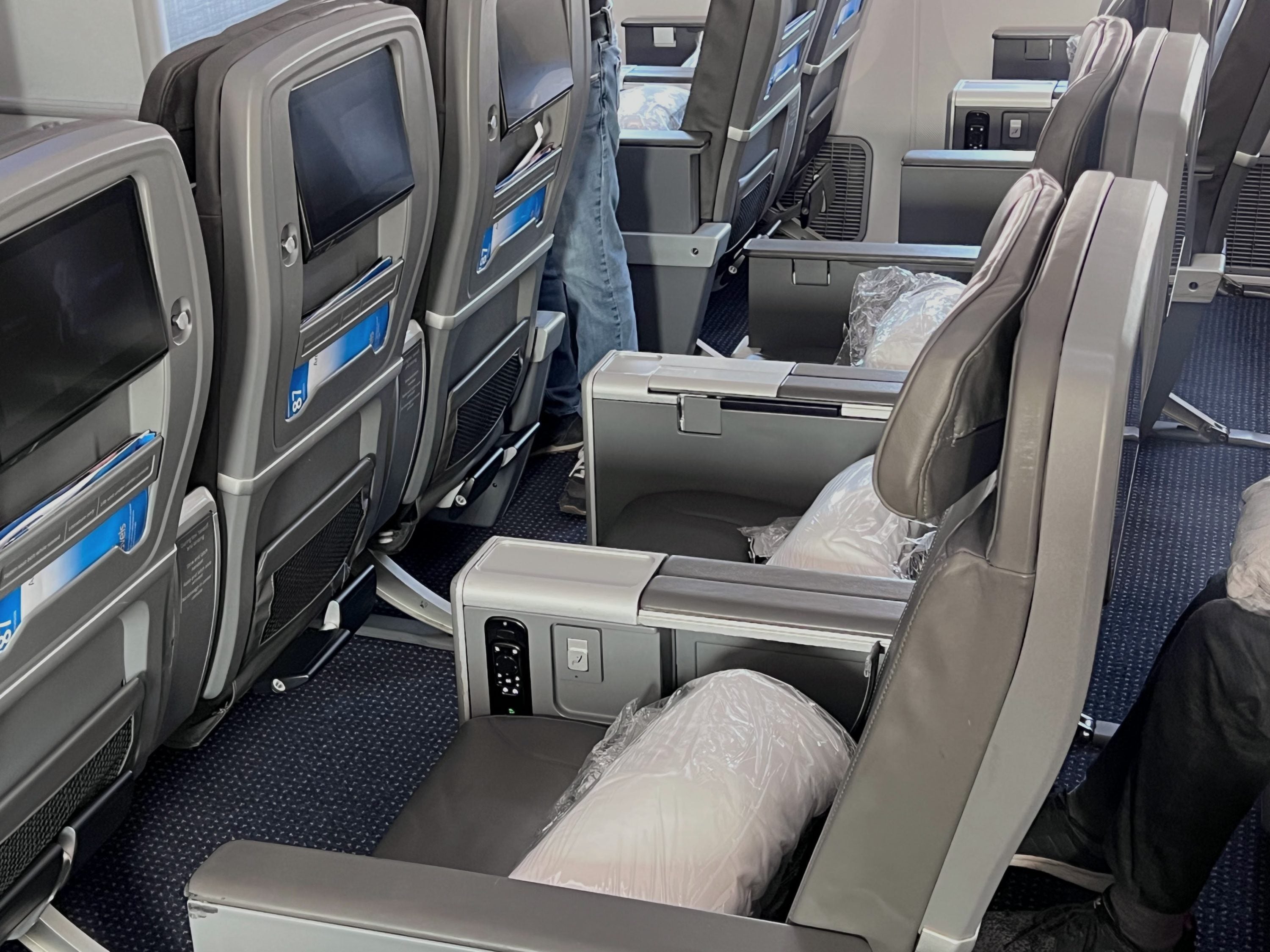American Track Trucks: The Ultimate Guide to Off-Road Dominance types.truckstrend.com
In the vast landscape of specialized vehicles, few command as much attention and capability as American Track Trucks. These aren’t your typical pick-ups or SUVs; they are robust, often American-manufactured vehicles, meticulously engineered or converted to replace traditional wheels with continuous track systems. This transformation unlocks an unparalleled level of off-road prowess, allowing them to traverse terrains that would render conventional wheeled vehicles utterly immobile. From deep snow and treacherous mud to loose sand and rocky inclines, American Track Trucks redefine accessibility, making them indispensable tools for a wide array of industries and adventurous pursuits.
This comprehensive guide will delve into the world of American Track Trucks, exploring their unique design, immense benefits, diverse applications, and the practical considerations involved in owning and operating these formidable machines. Whether you’re a professional operating in challenging environments, an outdoor enthusiast seeking ultimate adventure, or simply curious about these incredible vehicles, understanding American Track Trucks is key to appreciating their vital role in conquering the unconquerable.
American Track Trucks: The Ultimate Guide to Off-Road Dominance
Understanding American Track Trucks: Design and Core Components
At its heart, an American Track Truck is a vehicle designed for extreme off-road performance, primarily achieved by replacing the standard wheel-and-tire setup with a continuous track system. While some are purpose-built from the ground up, many are conversions of popular American truck chassis (like Ford F-Series, Ram, Chevrolet Silverado) due to their robust frames, powerful engines, and widespread availability.
What Defines Them?
The defining feature is the track system, which provides a significantly larger contact patch with the ground compared to tires. This increased surface area distributes the vehicle’s weight over a wider area, drastically reducing ground pressure. This is crucial for preventing the vehicle from sinking in soft terrain and minimizing environmental impact.
Core Components of a Track System:
- Track Assemblies: These are the heart of the system, typically made of durable rubber compounds reinforced with internal cords or steel cables. They wrap around a series of wheels and sprockets.
- Drive Sprockets: These large, toothed wheels connect directly to the truck’s axle hubs, transferring power to propel the tracks.
- Idler Wheels: Positioned at the opposite end of the track system from the drive sprockets, idlers help maintain track tension and guide the track smoothly.
- Bogie Wheels (Road Wheels): These smaller wheels are positioned along the bottom of the track frame, supporting the vehicle’s weight and distributing it evenly along the track, allowing it to conform to uneven terrain.
- Suspension System: Integrated within the track frame, this system provides articulation and shock absorption, ensuring a smoother ride and better ground contact over obstacles.
- Mounting Kits: Custom-engineered brackets and adapters ensure a secure and precise connection of the track system to the specific truck’s axle and frame.


Prominent manufacturers like Mattracks, Soucy, and Track N Go are key players in designing and producing these advanced track systems, often compatible with a wide range of American truck models.
The Unmatched Benefits of Track Systems
The decision to equip a truck with tracks is driven by a singular need: superior performance in the most challenging conditions. The benefits extend far beyond mere mobility:

- Superior Traction: Tracks offer an immense contact patch, providing unparalleled grip on surfaces like deep snow, thick mud, loose sand, and slippery rocks. This translates to exceptional pulling power and climbing ability.
- Reduced Ground Pressure: By spreading the vehicle’s weight over a much larger area, tracks exert significantly less pressure per square inch on the ground compared to tires. This prevents sinking in soft conditions and minimizes environmental disturbance, crucial for sensitive ecosystems or agricultural fields.
- Enhanced Stability: The wider footprint and often lower center of gravity provided by track systems contribute to remarkable stability, reducing the risk of rollovers on uneven terrain or steep inclines.
- Increased Payload Capacity: The superior weight distribution allows for greater payload capacity in soft conditions, as the vehicle is less likely to bog down.
- Versatility and All-Season Capability: Tracks transform a truck into a true all-season workhorse, capable of operating effectively in winter snows, spring thaws, summer mud, and fall harvests.
- Access to Inaccessible Areas: Many remote locations, whether for work or recreation, become reachable only with the extreme mobility offered by track systems.
Applications and Industries
The specialized capabilities of American Track Trucks make them invaluable across a diverse range of sectors:
- Agriculture: Farmers utilize track trucks for planting, spraying, and harvesting in wet or soft fields where wheeled tractors would get stuck, extending the operational window.
- Forestry: For logging, trail maintenance, and wildfire suppression, track trucks provide the necessary traction and low ground pressure to navigate dense forests and sensitive terrains without causing excessive damage.
- Utilities and Infrastructure: Power companies, pipeline operators, and telecommunication providers rely on track trucks to access remote transmission lines, conduct inspections, and perform maintenance in challenging, off-grid locations.
- Construction and Mining: In projects requiring heavy equipment movement over unstable ground, tracks ensure stability and prevent machinery from sinking, improving efficiency and safety.
- Search & Rescue and Emergency Services: During natural disasters, extreme weather events, or wilderness emergencies, track trucks are critical for reaching stranded individuals, delivering aid, and transporting specialized equipment.
- Oil & Gas Exploration: Accessing remote drilling sites, transporting equipment, and conducting environmental surveys in challenging terrains like tundra or swamps.
- Recreation and Adventure: For extreme overlanding, snow exploration, or hunting in deep wilderness, track trucks offer unparalleled access and a unique off-road experience.
Types of American Track Truck Conversions
While there are purpose-built tracked vehicles, the focus for "American Track Trucks" largely pertains to conversion systems for existing wheeled trucks.
- Bolt-On/Modular Systems: This is the most common type. These systems are designed to be relatively easy to install and remove, allowing a truck to be converted from wheels to tracks and back again. They typically bolt directly to the truck’s existing wheel hubs and frame. This modularity makes them popular for seasonal use or specific projects.
- Integrated/Permanent Conversions: Less common for standard pick-up trucks, these involve more extensive modifications, often for heavy industrial or military applications where the tracks are a permanent fixture and integrated into the vehicle’s core design.
- Track Material: Primarily, these systems use rubber tracks due to their lighter weight, quieter operation, and less damaging impact on surfaces compared to traditional steel tracks. Steel tracks are typically reserved for very heavy machinery or military vehicles.
Important Considerations Before Conversion
Transforming a wheeled truck into a tracked beast is a significant undertaking. Several factors must be carefully considered:
- Vehicle Compatibility: Not all trucks are suitable for track conversion. Factors like frame strength, axle weight ratings, drivetrain robustness (transfer case, differentials, transmission), and available mounting points are critical. Consult with track system manufacturers for approved vehicle lists.
- Installation Process: While many modular systems are designed for DIY installation, it’s a labor-intensive process requiring specialized tools and mechanical aptitude. Professional installation by certified dealers is often recommended to ensure proper alignment and safety.
- Performance Impact: Track systems significantly alter a truck’s performance:
- Speed Reduction: Top speeds are drastically reduced (often 20-40 mph maximum). Tracks are for torque and traction, not speed.
- Fuel Consumption: Expect a notable increase in fuel consumption due to increased rolling resistance and weight.
- Handling Changes: Turning radius increases, and steering feels different. Braking distances may also change.
- Maintenance: Tracks require more specialized maintenance than tires, including regular tension adjustments, inspection of bogie wheels and bearings, and monitoring track wear.
- Legal & Regulatory: Tracked vehicles are often not road-legal for sustained highway use in many jurisdictions. They may require permits, special licensing, or transportation via trailer to and from job sites. Always check local regulations.
- Cost: The initial investment in a track system is substantial, in addition to potential modifications to the truck itself and ongoing maintenance costs.
Practical Advice and Actionable Insights
For those considering or operating an American Track Truck, here’s some practical advice:
- Assess Your Needs Thoroughly: Before purchasing, clearly define the primary terrain, weather conditions, and tasks the truck will perform. This will guide your choice of track system size, material, and brand.
- Prioritize Vehicle Strength: Start with a truck that has a robust chassis, heavy-duty axles, and a capable drivetrain. Upgrading components might be necessary.
- Professional Installation is Key: Unless you possess extensive mechanical experience and the right tools, invest in professional installation. Correct alignment and tension are crucial for performance and longevity.
- Master Driving Techniques: Operating a tracked vehicle is different from a wheeled one. Practice in safe environments to understand its unique turning characteristics, braking, and how it handles various obstacles.
- Adhere to Maintenance Schedules: Regular inspection and maintenance of track tension, bearing lubrication, and component wear are paramount to prevent costly failures and ensure safety.
- Plan Your Routes: Due to reduced speed and increased fuel consumption, efficient route planning is essential, especially for longer distances or remote operations.
- Consider a Trailer: For transport to and from off-road sites, a heavy-duty trailer is often a necessity, given the limited on-road legality and speed of tracked vehicles.
Challenges and Solutions
While immensely capable, American Track Trucks come with their own set of challenges:
- Reduced Top Speed:
- Challenge: Tracks are slow, limiting their utility for rapid transit.
- Solution: Accept this limitation; they are designed for capability, not speed. Plan transport via trailer for highway travel.
- Increased Fuel Consumption:
- Challenge: Heavier, more resistant tracks mean higher fuel burn.
- Solution: Budget for increased fuel costs, carry extra fuel on remote trips, and optimize routes.
- High Initial Cost:
- Challenge: Track systems represent a significant investment.
- Solution: View it as an investment in unparalleled capability. Explore financing options or consider used systems if available.
- Maintenance Complexity and Cost:
- Challenge: More components mean more maintenance points and potential wear parts.
- Solution: Strict adherence to manufacturer’s maintenance schedule, proactive inspections, and budgeting for replacement parts (e.g., bogie wheels, track sections).
- Limited On-Road Use:
- Challenge: Often not street legal, or only for short distances at low speeds.
- Solution: Utilize trailers for transportation between sites or accept their role as dedicated off-road machines.
- Wear and Tear on Truck Components:
- Challenge: The added weight and stress can accelerate wear on axles, transmissions, and suspension.
- Solution: Start with a robust truck, perform regular checks, and be prepared for component replacements.
American Track Trucks: Estimated Price Guide
The cost of converting a truck to tracks varies significantly based on the track system manufacturer, the specific truck model, the type of track (light-duty vs. heavy-duty), and whether installation is included. The following table provides estimated price ranges for common track systems compatible with American trucks. These are for the track systems themselves, not including the truck.
| Category | Description | Estimated Price Range (USD) | Key Factors Influencing Price |
|---|---|---|---|
| Light-Duty Systems | For smaller SUVs, UTVs, and light-duty pickups (e.g., Toyota Tacoma, Jeep Gladiator) | $25,000 – $45,000 | Track width, axle load rating, track material, brand reputation. |
| Medium-Duty Systems | Most common for half-ton to three-quarter-ton pickups (e.g., F-150, Ram 1500/2500, Silverado 1500/2500) | $40,000 – $65,000 | Increased load capacity, larger track footprint, more robust components. |
| Heavy-Duty Systems | For one-ton and larger commercial/industrial trucks (e.g., F-350+, Ram 3500+, Silverado 3500+) | $60,000 – $90,000+ | Extreme load capacity, heavy-duty construction, specialized applications. |
| Installation Cost | Professional installation by a dealer. | $1,000 – $5,000+ | Shop labor rates, complexity of truck model, additional modifications. |
| Optional Accessories | Track cases, spare parts, specialized adapters. | Varies | Depending on specific needs and manufacturer offerings. |
Note: Prices are estimates and subject to change. Always obtain direct quotes from authorized dealers based on your specific vehicle and requirements.
Frequently Asked Questions (FAQ)
Q1: Can I drive my American Track Truck on public roads?
A1: Generally, no, not for extended periods or at highway speeds. Most track systems are designed for off-road use only, and many jurisdictions have laws restricting tracked vehicles on paved roads due to potential damage and safety concerns. Always check local regulations.
Q2: How long does it take to install a track system on a truck?
A2: For modular bolt-on systems, professional installation typically takes 4-8 hours. DIY installation can take significantly longer, especially for first-timers, ranging from a full day to several days.
Q3: Do tracks damage the terrain more than tires?
A3: Surprisingly, no. Due to their significantly larger contact patch, tracks distribute the vehicle’s weight over a much wider area, resulting in lower ground pressure per square inch. This means less compaction, rutting, and overall damage to sensitive terrains compared to wheeled vehicles, especially in soft conditions.
Q4: What kind of maintenance do tracks require?
A4: Regular maintenance includes checking track tension (crucial for performance and longevity), inspecting bogie wheels, idlers, and drive sprockets for wear, lubricating bearings, and cleaning debris from the track assemblies. Follow the manufacturer’s specific maintenance schedule.
Q5: How much slower will my truck be with tracks?
A5: Drastically slower. Most track systems limit top speed to around 20-40 mph (32-64 km/h). They are built for torque and traction, not high speed.
Q6: Can any truck be converted to tracks?
A6: No. Compatibility depends on the truck’s frame strength, axle capacity, drivetrain robustness, and available mounting points. Track system manufacturers provide compatibility lists for specific truck makes and models. Heavy-duty trucks are generally better candidates.
Q7: What is the lifespan of a track system?
A7: The lifespan varies greatly depending on usage, terrain, maintenance, and the quality of the system. With proper care, tracks can last several thousand hours of operation. Components like bogie wheels and idlers may need replacement sooner than the tracks themselves.
Conclusion
American Track Trucks represent the pinnacle of off-road capability, transforming conventional vehicles into unstoppable forces capable of conquering the most challenging terrains on Earth. Their unique design, centered around continuous track systems, provides unmatched traction, reduced ground pressure, and superior stability, making them indispensable in industries ranging from agriculture and forestry to search and rescue.
While the investment in a track system is significant, and operational considerations like reduced speed and increased fuel consumption must be accounted for, the benefits of accessing otherwise unreachable areas and operating in extreme conditions often far outweigh the challenges. For those who demand the ultimate in off-road performance and reliability, an American Track Truck is not just a vehicle; it’s a testament to engineering ingenuity and a gateway to unparalleled adventure and productivity in the toughest environments imaginable.
